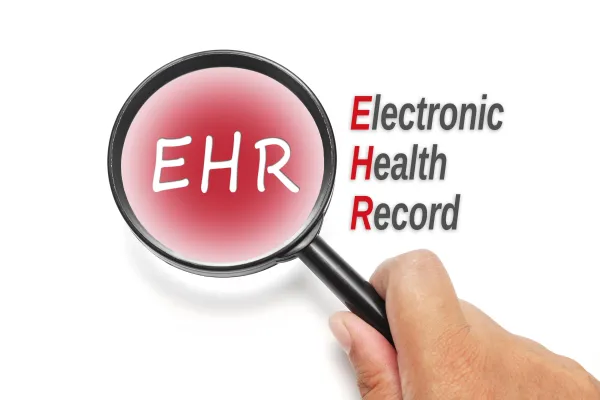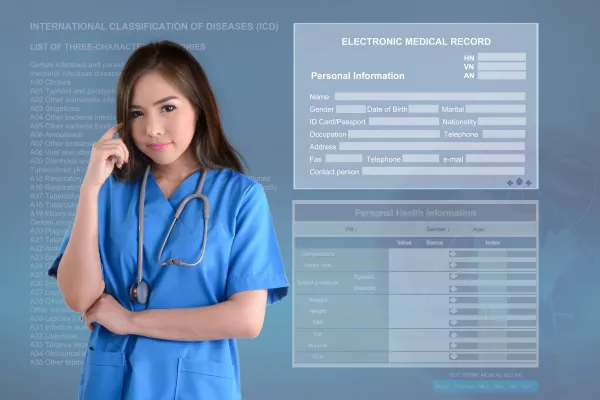Internal Medicine Coding Alert
Know 2 Simple Codes to Make CCM Coding Less Complex

Know what makes complex chronic care management … complex.
If your practice is seeing more and more chronic care management patients, you’re not alone.
According to the 2012 National Health Interview Survey (NHIS), 117 million people in the U.S. — 49.8 percent of the country’s population — suffer from one of 10 different chronic diseases: asthma, chronic obstructive pulmonary disease (COPD), stroke, hypertension, heart disease, kidney disease, hepatitis, diabetes, arthritis, or cancer. And 26 percent of the population suffer from two or more of these diseases.
So, if documenting chronic care management isn’t already a significant part of your coding experience, chances are it will be pretty soon. And the best place to begin mastering the coding is by comparing chronic care management (CCM) with complex CCM.
Look for Care Plan, Computer, Consent, and Chronic Conditions
All CCM and complex CCM services must begin with the establishment of four Cs:
- a comprehensive care plan,
- a computerized record (well, an EMR/EHR to be precise),
- the patient’s consent, and
- the presence of multiple chronic conditions.
CCM services, according to CPT®, require “establishing, implementing, revising, or monitoring [a] care plan”; similarly, complex CCM requires the “establishment or substantial revision of a comprehensive care plan.”
To code for CCM services (99490, Chronic care management services …) or complex CCM services (99487, Complex chronic care management services …), the patient must also exhibit multiple chronic conditions (the last C). Such conditions must:
- last at least 12 months, or until the death of the patient; and
- place the patient at significant risk of death, acute exacerbation/decompensation, or functional decline.
The similarities between the two codes end there, however, since 99487 adds in two additional components: a larger amount of time required to report the service and “moderate or high complexity medical decision making (MDM).”
Add Time to Make CCM Complex
In addition to the 4 Cs, 99490 requires “at least 20 minutes of clinical staff time directed by a physician or other qualified health care professional, per calendar month” per CPT® guidelines. But for 99487, CPT® requires “60 minutes of clinical staff time directed by a physician or other qualified health care professional, per calendar month,” reflecting the complex nature of the care.
An additional E/M code, +99489 (… each additional 30 minutes of clinical staff time …), can be listed separately in addition to 99487 to document CCM services that last for 90 minutes or more. So, for a complex CCM visit that lasts for 60 to 89 minutes, you would report 99487; for a visit lasting for 90 to 119 minutes, you would report 99487 and +99489 x 1; and for visits that last two hours or more, you would report 99487 and +99489 x 2, with additional units of 99489 for every 30 minutes beyond two hours.
This part of CCM documentation can be a huge challenge for family medicine practices, so some physicians refuse to bill for the services, according to Marcella Bucknam, CPC, CCS-P, COC, CCS, CPC-P, CPC-I, CCC, COBGC, manager of clinical compliance with PeaceHealth in Vancouver, Washington. “Even though we see documentation of the work associated with these codes, time has not been recorded, so the codes cannot be used. It is very difficult to track cumulative time over a month, and providers will either need a process for tracking it or they may need [a special feature built] in their EMR to track and calculate minutes spent providing the service,” Bucknam suggests.
Kent Moore, senior strategist for physician payment at the American Academy of Family Physicians, also notes that the opposite can be true: “Coding solely based on time and ignoring the other required elements of the code,” Moore notes, creates another problem. As an example, he offers the scenario of coding “99487 because the clinical staff spent 60 minutes in chronic care management during the month, even though one or more of the other elements required for 99487 were not met.”
Add Moderate, High-Level MDM to Complete the Picture
According to CPT® guidelines, services you represent with 99487 also require “moderate or high complexity medical decision making.” This means that two of the following three elements must be met or exceeded:
- “the number of possible diagnoses and/or the number of management options that must be considered” must be multiple or extensive,
- “the amount and/or complexity of medical records, diagnostic tests, and/or other information that must be reviewed, obtained, or analyzed” should be moderate or extensive, and
- “the risk of significant complications, morbidity, and/or mortality, as well as comorbidities, associated with the patient’s presented problem(s), the diagnostic procedure(s), and/or the possible management options” must be moderate or high.
Related Articles
Internal Medicine Coding Alert
- CPT® Coding:
Use These Health and Behavior Codes to Address Patient, Caregiver Concerns
Recent CPT® revisions aid cognition, collaborative care documentation. The 2017 revisions to CPT® and HCPCS [...] - Coding Quiz:
Don't Sneeze at This Seasonal Allergy Coding Quiz
Find relief from testing and treatment coding problems by taking this test. Now that allergy [...] - E/M Coding:
Know 2 Simple Codes to Make CCM Coding Less Complex
Know what makes complex chronic care management … complex. If your practice is seeing more [...] - Coding Quiz:
Answers: How Did You Do on Our Seasonal Allergy Test?
Our experts provide some hot summer coding advice. Once you’ve answered the quiz questions on [...] - You Be the Coder:
Follow This Advice for Correct Immunization Coding
Question: A 28-year-old patient recently came into our office for a routine flu immunization, which was [...] - Reader Question:
Don't Be Left Speechless by These Problem-Focused E/M Codes
Question: A patient came in for a physical exam. While there, one of our physicians also [...] - Reader Question:
Use 99406 & 99407 for Success in Smoking Cessation Coding
Question: CMS deleted HCPCS codes G0436 (Smoking and tobacco cessation counseling visit for the asymptomatic patient; [...]




